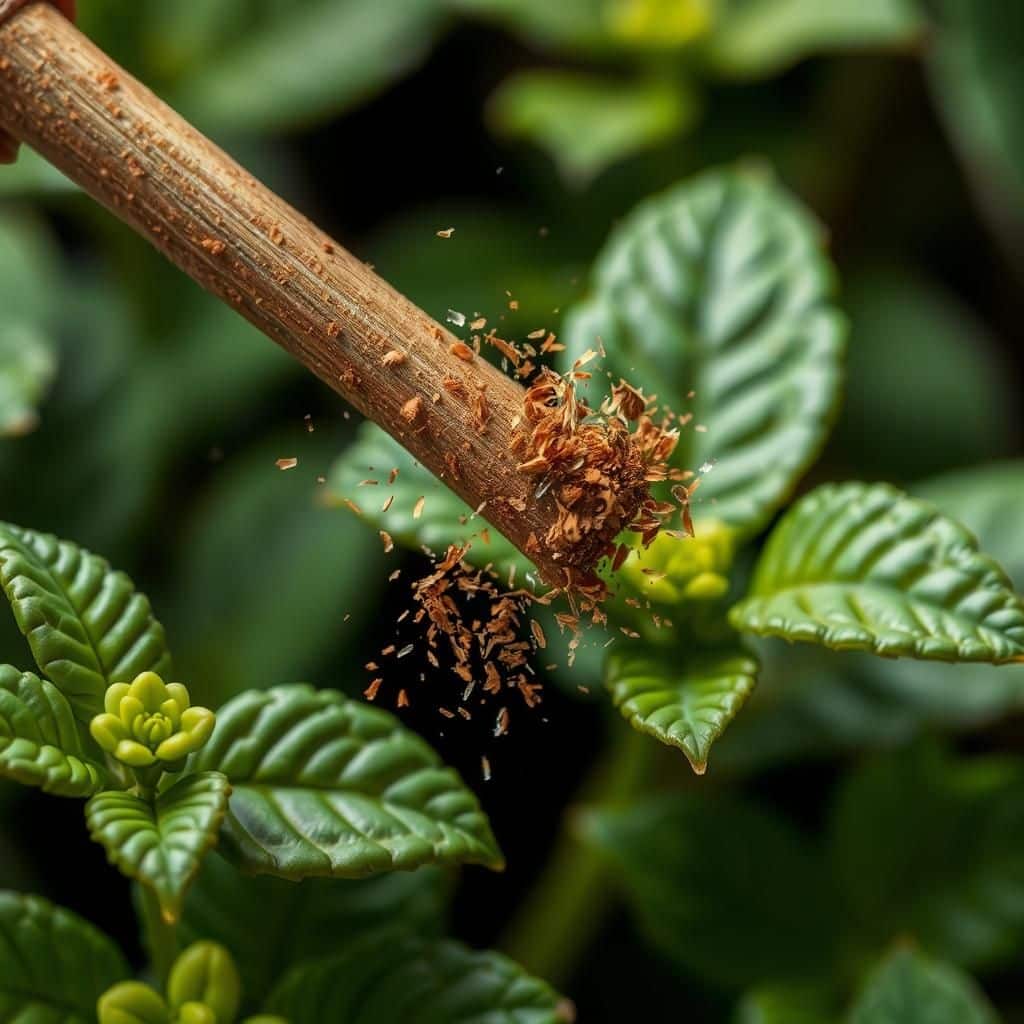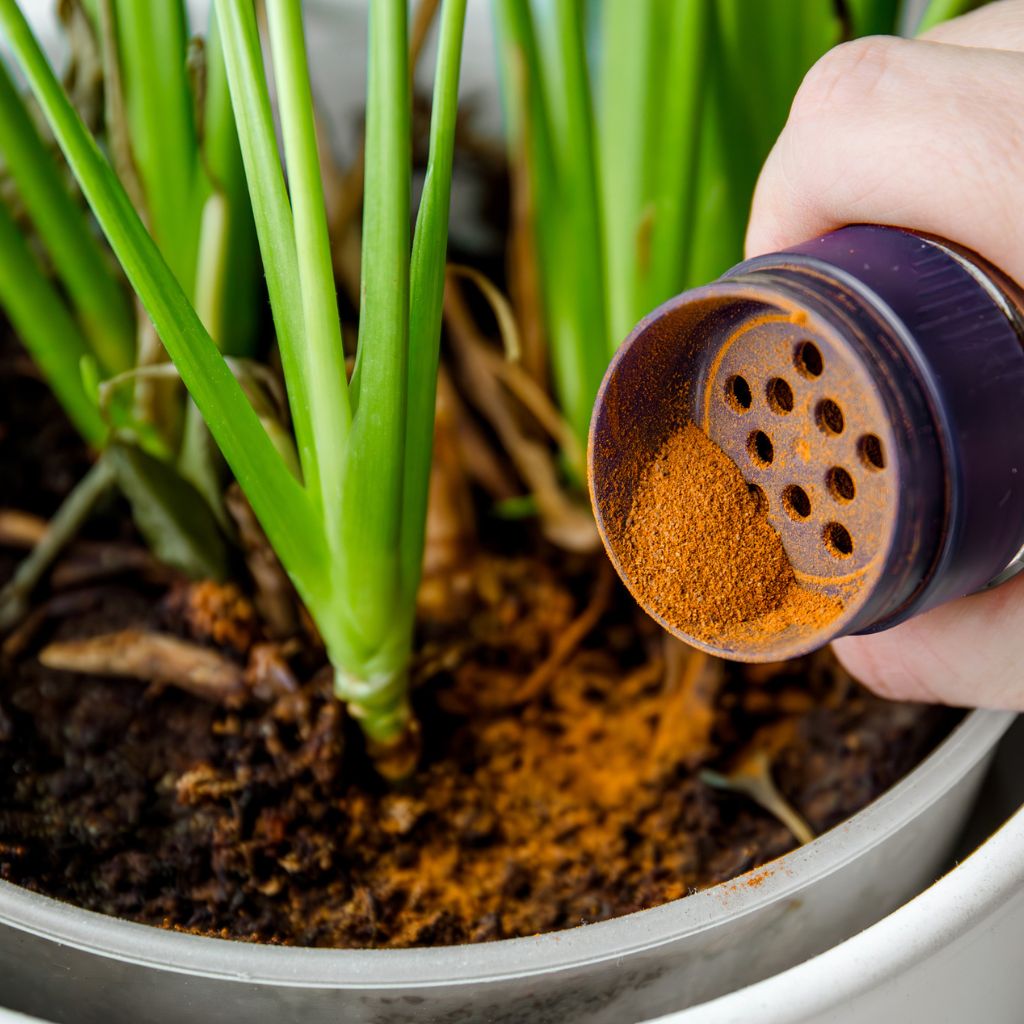Can I Sprinkle Cinnamon on My Plants? Discover the Benefits and Tips!

Cinnamon is a popular spice known for its warm flavor and numerous health benefits, but did you know it can also be beneficial for your plants? Sprinkling cinnamon on your plants can help enhance their growth, ward off pests, and prevent fungal diseases. In this article, we will explore the various advantages of using cinnamon in your gardening routine and provide practical tips on how to safely apply it to your plants. Whether you're a seasoned gardener or just starting out, discover how this simple spice can contribute to a healthier garden and thriving plants.
Can I Sprinkle Cinnamon on My Plants?
Sprinkling cinnamon on your plants can offer several benefits, primarily due to its antifungal and antimicrobial properties. When applied to the soil or the base of the plants, cinnamon can help prevent various types of fungal infections and keep harmful pests at bay. However, it is important to use cinnamon sparingly, as too much can potentially harm the plant or disrupt the soil's natural ecosystem. It is best to test on a small area first to ensure your specific plant will respond positively to this natural remedy.
Benefits of Using Cinnamon on Plants
Applying cinnamon to your plants offers numerous benefits, such as acting as a natural fungicide that can help combat diseases like damping-off in seedlings. Additionally, it may deter unwanted insects like gnats and can promote root growth when sprinkled around newly potted plants. Its anti-inflammatory properties also support overall plant health, making it a useful addition to your gardening arsenal.
How to Apply Cinnamon to Your Plants
To effectively apply cinnamon to your plants, simply sprinkle a moderate amount on the soil surface or mix it with water to create a paste. Aim for areas affected by fungal issues or around the base of the plant. It’s advisable to apply once every few weeks to maintain effectiveness, ensuring not to overload the soil, as too much can disturb the microbial balance.
Potential Risks of Using Cinnamon
While cinnamon has many beneficial properties, it can also pose some risks to your plants. Over-application may lead to soil toxicity, which can inhibit plant growth or damage delicate roots. Additionally, excessive use may alter the soil's pH balance, negatively impacting nutrient availability. Therefore, it's crucial to use cinnamon sparingly and monitor your plants for any signs of distress.
Types of Plants That Benefit from Cinnamon
Many plants can benefit from the use of cinnamon, particularly those that are prone to fungal infections or pests. Common houseplants like African violets, rose bushes, and herbs such as basil may thrive with this addition. However, some sensitive plants may not react well, so always check compatibility before applying. A wide range of garden vegetables can also benefit, especially during their seedling stage.
What to Avoid When Using Cinnamon
When using cinnamon on your plants, it’s essential to avoid using it in conjunction with chemical fertilizers or pesticides, as this can create an adverse reaction. Additionally, refrain from using cinnamon on plants that are already showing signs of stress from other factors, such as drought or nutrient deficiency, as it may compound the problem. Always ensure your plants are adequately cared for prior to introducing any new remedies.
| Cinnamon Benefits | Risks | Application Methods |
|---|---|---|
| Natural fungicide | Soil toxicity | Sprinkling on soil |
| Deters insects | pH imbalance | Mixing with water |
| Promotes root growth | Excessive application | Only on affected areas |
Which plants don't like cinnamon?

Cinnamon is widely regarded for its aromatic qualities and potential pest-repelling attributes. However, it can be detrimental to certain plants due to its strong properties. Here are some plants that may not appreciate cinnamon:
1. Cacti: Cacti are adapted to arid conditions and have a unique physiological structure. When exposed to cinnamon, the powdered spice can retain moisture and cause fungal issues, which may harm these succulents.
See also:
2. Ferns: Ferns thrive in moist environments, and the application of cinnamon can dry out their delicate fronds. This spice tends to create a barrier that traps moisture in a way that can disrupt the ideal growing conditions for ferns.
3. Tomatoes: While cinnamon is often used as a fungicide, it can interfere with the natural microbial communities in the soil that tomatoes rely on for nutrients. Furthermore, the aromatic compounds may disturb their growth and development.
4. Beans: Similar to tomatoes, beans interact with specific soil microorganisms. The strong scent of cinnamon might repel these beneficial microbes, leading to stunted growth or reduced yields.
5. Peppers: Pepper plants may experience stunted growth when exposed to cinnamon. The compound can affect the roots and impede their ability to absorb essential nutrients and moisture.
Effects of Cinnamon on Cacti
Cacti are specially designed to survive with minimal water. Applying cinnamon can create an unwanted moisture barrier that may lead to fungal problems.
- It can disrupt the dry conditions cacti prefer.
- The moisture retention can cause rotting at the roots.
- Fungal infections may arise due to compromised health.
Impact on Ferns
Ferns thrive in humid environments, making them sensitive to any substance that alters their moisture levels.
- Cinnamon can absorb moisture and dry out the fronds.
- It may impair their photosynthesis process.
- Changes in humidity can lead to leaf browning and die-off.
Effects on Tomato Plants
Tomatoes require specific soil microorganisms to absorb nutrients effectively. Cinnamon can disrupt this delicate balance.
- The spice may kill beneficial soil microbes.
- Tomatoes may suffer from nutrient deficiencies.
- Interference with growth stages may occur, leading to poor yields.
Implications for Bean Cultivation
That coexistence with soil microbes is crucial for beans' proper growth makes them vulnerable to disturbances caused by cinnamon.
- Resistance to pests and diseases may diminish.
- Yield can be adversely affected.
- Overall plant health may decline due to nutrient shortages.
Effects on Pepper Growth
Pepper plants require a balanced environment to thrive; cinnamon can impede their development.
- It may stunt root growth and expansion.
- Nutritional absorption becomes compromised.
- Peppers can exhibit poor growth as a result.
Are coffee grounds and cinnamon good for plants?


Coffee grounds and cinnamon can indeed be beneficial for plants, but their effectiveness can depend on several factors, including the type of plant and the method of application.
Coffee grounds provide a nutrient-rich, organic material that can enhance the soil's quality and promote healthy plant growth. They are a natural source of nitrogen, which is essential for plant growth. In addition, they can improve soil structure, encourage earthworm activity, and help retain moisture. However, it’s essential to use coffee grounds in moderation, as excessive amounts can lead to an imbalance in the soil's pH levels.
Cinnamon, on the other hand, is not a nutrient source but serves as a natural fungicide. It can help prevent diseases such as damping-off in seedlings and can protect plants from certain pests due to its antimicrobial properties. When used appropriately, cinnamon can create a healthier environment for plants.
Coffee Grounds: Nutrients and Benefits
Coffee grounds are particularly rich in nitrogen, which is crucial for promoting leaf growth. These grounds also provide other nutrients like phosphorus and potassium.
- Soil Enhancement: Mixing coffee grounds into your soil improves its texture and can help retain moisture.
- Compost Addition: Coffee grounds can enrich your compost pile, accelerating the decomposition process.
- Attracting Earthworms: Earthworms are beneficial for soil aeration, and coffee grounds can attract them, enhancing soil health.
Cinnamon as a Natural Fungicide
Cinnamon contains cinnamaldehyde, which effectively combats fungal infections in plants. This makes it an ideal choice for protecting seedlings and preventing root rot.
- Seedling Protection: Sprinkling cinnamon on seedlings can protect them from damping-off disease.
- Avoiding Mold: Using cinnamon on the soil surface can prevent mold growth, especially in moist conditions.
- Pest Deterrent: The strong smell of cinnamon can repel certain pests, providing an additional layer of protection for your plants.
How to Use Coffee Grounds in Gardening
Integrating coffee grounds into your gardening routine requires proper application to enhance plant growth effectively.
- Direct Application: Spread a thin layer of coffee grounds on the soil surface around plants.
- Mixing Into Soil: Combine coffee grounds into the soil to improve aeration and drainage.
- Compost Mixing: Add coffee grounds to your compost bin to increase nitrogen content and improve the overall nutrient profile.
Integrating Cinnamon in Plant Care
Cinnamon can be used in various ways to safeguard your plants and boost their resilience against diseases.
- Dusting Seedlings: Sprinkle cinnamon powder on the soil surface around new seedlings to protect against fungal infections.
- Root Treatment: Dipping the roots of cuttings in ground cinnamon can help prevent rot before planting.
- Spraying Solution: Mixing cinnamon with water and using it as a mist can help tackle existing fungal issues.
Considerations When Using Coffee Grounds and Cinnamon
While both coffee grounds and cinnamon offer numerous benefits, there are some points to consider to maximize their effectiveness.
- Moderation: Use coffee grounds sparingly to avoid over-acidity in the soil.
- Plant Compatibility: Not all plants respond positively to coffee grounds; research the specific needs of your plants.
- Storage and Freshness: Ensure that coffee grounds are fresh and dry before applying, as stale grounds may harbor unwanted bacteria.
Questions from Our Readers
Can I sprinkle cinnamon on my plants?
Yes, you can sprinkle cinnamon on your plants as it can act as a natural fungicide and may help prevent diseases. However, it's important to use it in moderation to avoid any potential harm to your plants.
What types of plants benefit from cinnamon?
Cinnamon is particularly beneficial for seedlings and young plants, as it helps reduce the risk of damping-off disease, a common issue for new plants. It's also useful for herbs and houseplants where fungus may thrive.
See also:
How should I apply cinnamon to my plants?
To apply cinnamon, simply dust a small amount on the soil or around the base of the plant, being careful not to overdo it. Avoid direct application on the plant's foliage, as this could potentially harm the leaves.
Are there any risks associated with using cinnamon on plants?
While cinnamon is generally safe, overapplication can lead to soil imbalance and negatively affect plant health. Always monitor your plants after application for any adverse reactions or changes in growth.

If you want to read more articles like Can I Sprinkle Cinnamon on My Plants? Discover the Benefits and Tips!, we recommend you check out our Plants category.
Leave a Reply
Related Articles